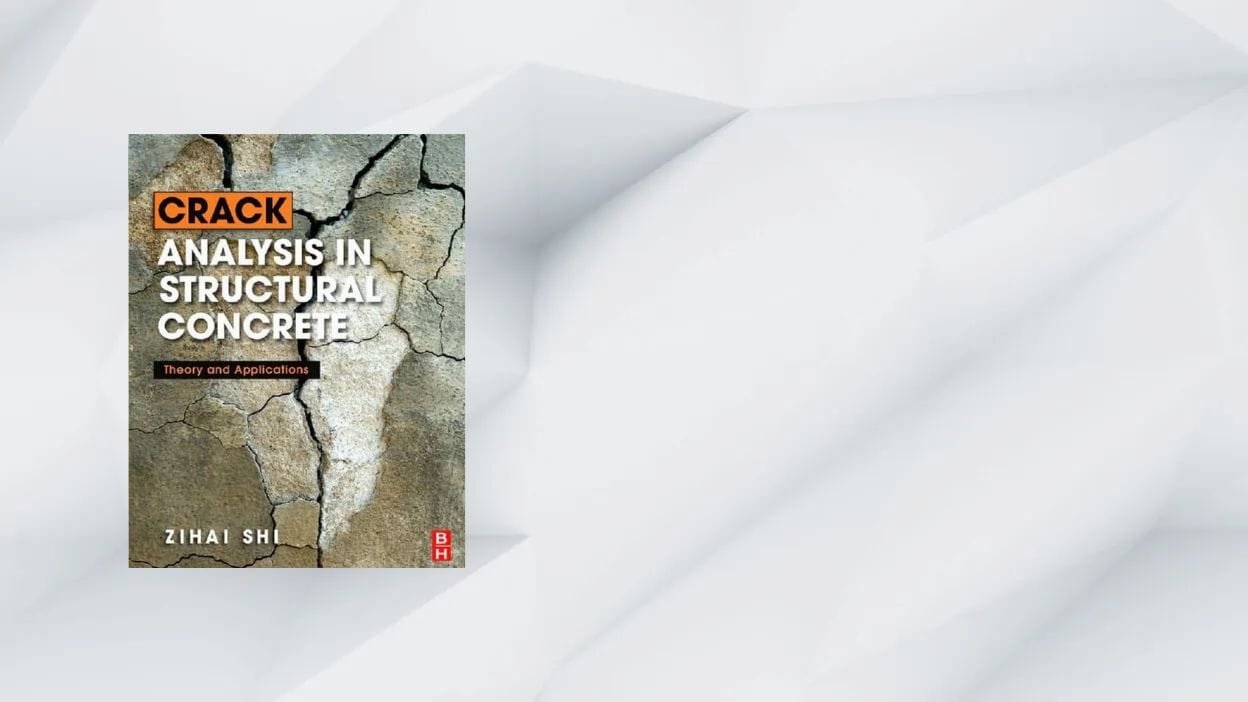| Item | Details |
|---|---|
| Authors | Zihai Shi |
| Publisher | Butterworth-Heinemann / Elsevier |
| Edition / Year | 1st ed., 2009 |
| Length | 344 pp. |
| ISBN-13 | 978-0750684460 |
| Audience | Graduate students, researchers & specialist consultants |
| Core Themes | Linear & nonlinear fracture mechanics, multiple-crack modelling |
Why This Book Matters
Concrete cracking dictates the service life of bridges, dams and high-rise cores, yet most design codes still rely on empirical crack-width limits. Crack Analysis in Structural Concrete – Theory and Applications bridges that gap by marrying rigorous fracture-mechanics theory with practical modelling tactics, letting engineers predict crack initiation, growth and coalescence instead of merely limiting bar spacing. In an era of asset-life extension and structural-health monitoring, that predictive power is gold.
Chapter Highlights
| Ch. | Focus | Take-away |
|---|---|---|
| 1-2 | Fundamentals of LEFM & NLFM | Clear recap of stress-intensity factors and cohesive-zone concepts. |
| 3 | Stress Singularity & Mesh Design | Tips on quarter-point and XFEM elements to tame singularities. |
| 4-6 | Extended Fictitious-Crack Model (EFCM) | Step-by-step derivation, then code-ready algorithms. |
| 7 | Multiple-Crack Interaction | Analytical rules for crack spacing & shielding. |
| 8 | Mixed-Mode Fracture | How shear/torsion alter crack-propagation paths. |
| 9 | Case Studies | Tunnel linings, RCC dams & precast segmental joints with validation data. |
Strengths
- Theory-to-practice balance – Heavy math is immediately followed by worked FEM examples.
- EFCM clarity – Possibly the clearest open-access explanation in print.
- Mixed-mode depth – Covers Mode I/II interaction often skipped in other texts.
- Laser-focused on concrete – No steel or composites detours.
Limitations
- Steep learning curve – Requires comfort with tensors and nonlinear solvers.
- No direct code-specific links – Little guidance on Eurocode 2 crack-width checks.
- Dated software screenshots – ANSYS-classic UI may feel archaic to 2025 readers.
How It Compares
| Title | Best For | Distinct Edge |
|---|---|---|
| Crack Analysis in Structural Concrete | Researchers & PhD candidates | Detailed EFCM algorithms |
| Bažant & Planas “Fracture Mechanics of Concrete” (1997) | Academics | Foundational size-effect theory |
| Wu & Xu “Concrete Fracture” (2013) | Practitioners | Multiscale meso-model focus |
| Karihaloo “Fracture Mechanics of Concrete” (2e, 2023) | Code drafters | Extensive experimental database |
SEO-Friendly FAQ
Q1. Is the book suitable for undergraduates?
Only if they have taken an introductory fracture-mechanics elective; otherwise the math may overwhelm.
Q2. Does it include ready-to-run code?
Algorithms are spelled out, but you’ll need to implement them in ABAQUS, ANSYS or open-source FEniCS.
Q3. How does it differ from Bažant & Planas?
Bažant focuses on asymptotic theory and size effect, whereas Shi dives deeper into numerical crack-propagation schemes.
Q4. Are durability or corrosion cracks covered?
Chemical-induced cracking is mentioned, but the bulk targets mechanical loading and mixed-mode fracture.

